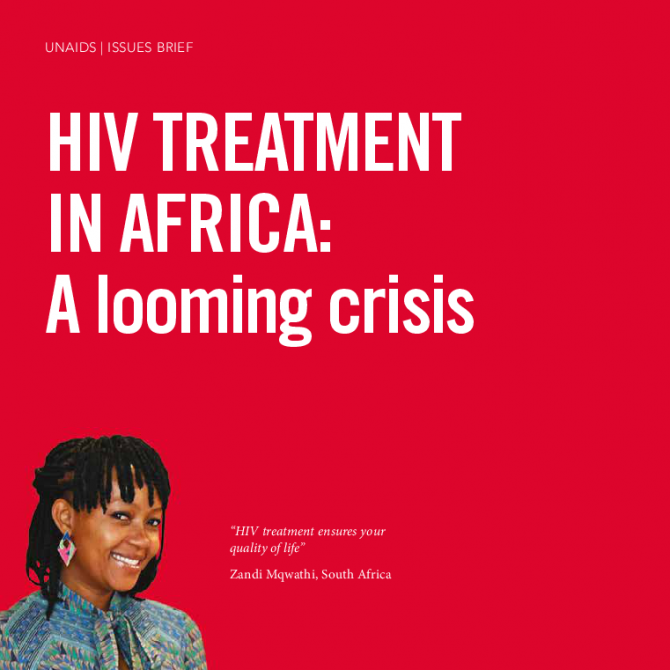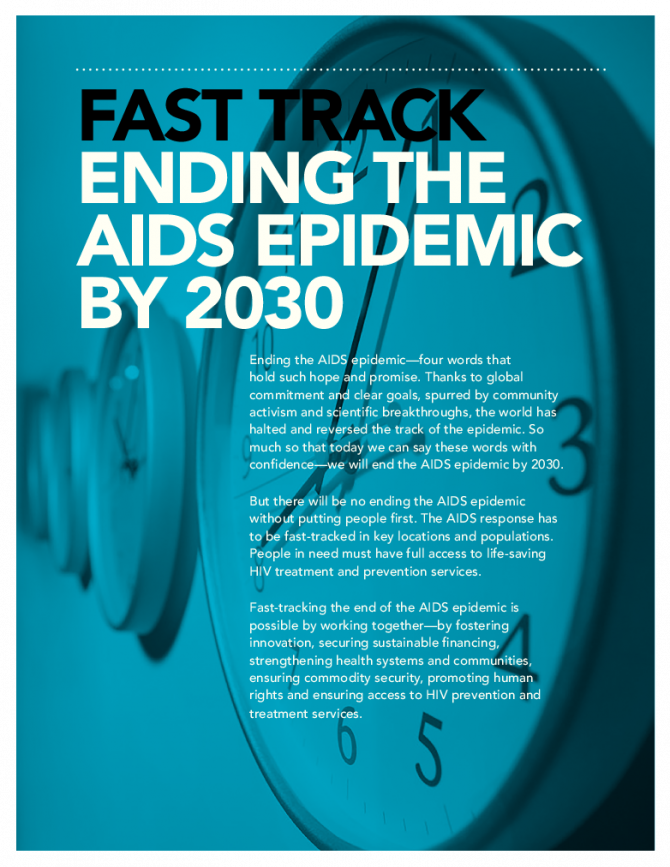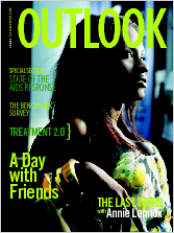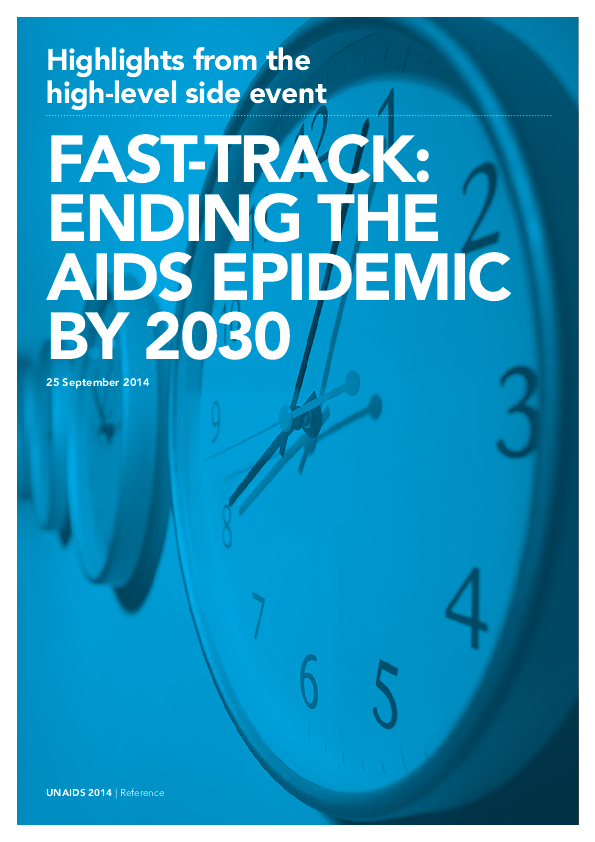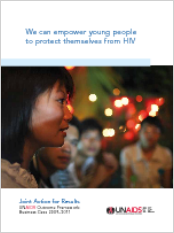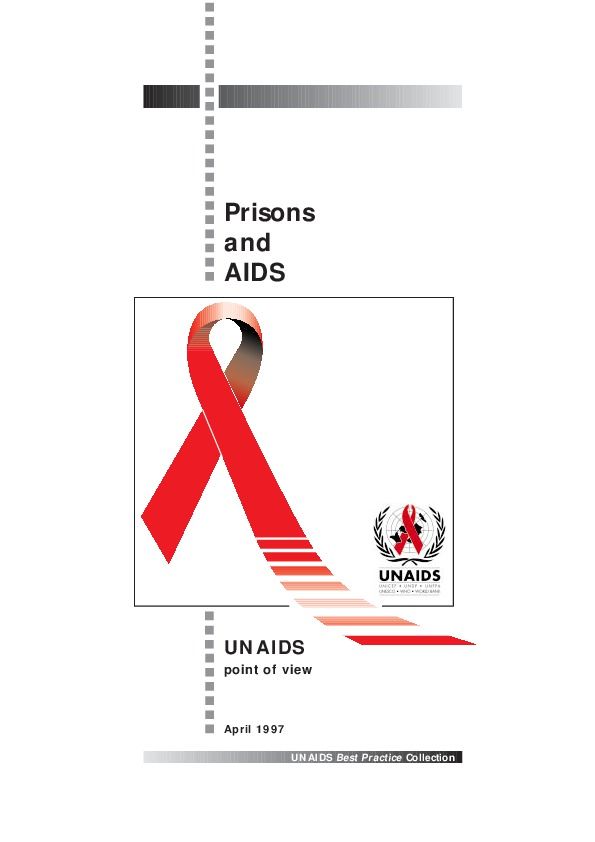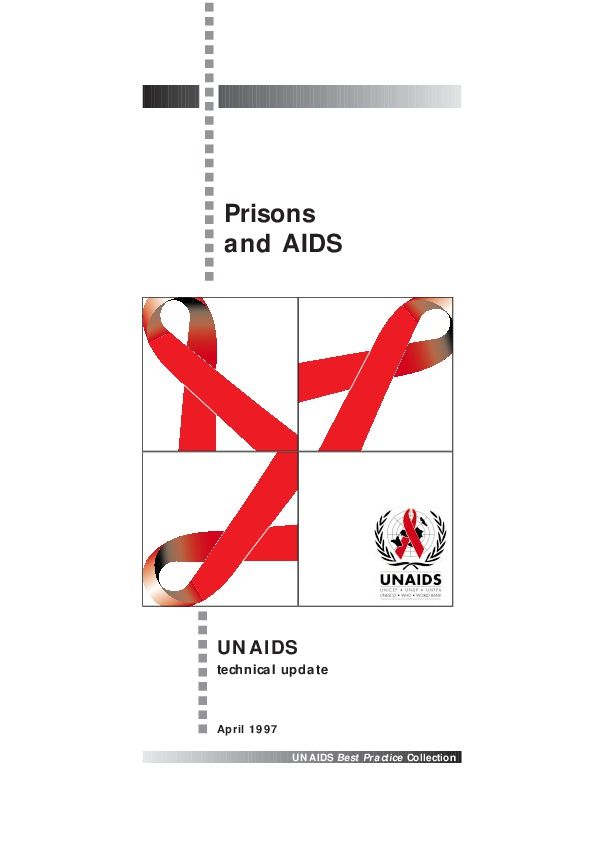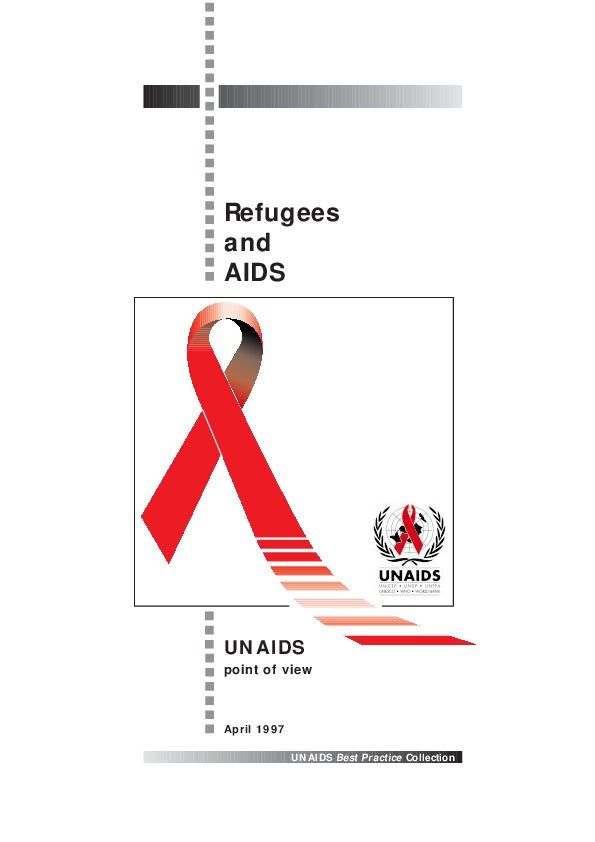Documents
HIV treatment in Africa: A looming crisis
15 June 2015
Africa’s leadership on AIDS has sharply increased life expectancy and steadily reduced new HIV infections. Hopes are high, but these gains are at grave risk. Continued dependency on external AIDS funding and imported medicines and diagnostics threatens to put the future of AIDS beyond Africa’s control.
Documents
Fast-Track - Ending the AIDS epidemic by 2030
18 November 2014
The world is embarking on a Fast-Track strategy to end the AIDS epidemic by 2030. To reach this visionary goal after three decades of the most serious epidemic in living memory, countries will need to use the powerful tools available, hold one another accountable for results and make sure that no one is left behind. Additional resources.
Documents
Global Plan towards the Elimination of New HIV Infections among Children by 2015 and Keeping Their Mothers Alive
09 June 2011
This Global Plan provides the foundation for country-led movement towards the elimination of new HIV infections among children and keeping their mothers alive. The Global Plan was developed through a consultative process by a high level Global Task Team convened by UNAIDS and co-chaired by UNAIDS Executive Director Michel Sidibé and United States Global AIDS Coordinator Ambassador Eric Goosby. It brought together 25 countries and 30 civil society, private sector, networks of people living with HIV and international organizations to chart a roadmap to achieving this goal by 2015.
Documents
Fast track: Ending the AIDS epidemic by 2030
25 September 2014
Documents
UNAIDS OUTLOOK report 2010
09 July 2010
New UNAIDS report shows that young people are leading the prevention revolution, with 15 of the most severely affected countries reporting a 25% drop in HIV prevalence among this key population. New global opinion poll shows that AIDS continues to be of major importance for the public around the world.
Documents
We can empower young people to protect themselves from HIV
16 December 2010
More than half of all sexually transmitted infections, other than HIV, (more than 180 million out of a global annual total of 340 million) occur among young people aged 15 to 24. Yet most young people still have no access to sexual and reproductive health programmes that provide the information, skills, services, commodities, and social support they need to prevent HIV. In fact, many laws and policies go as far as to exclude young people from accessing sexual health and HIV-related services, such as HIV testing and counselling, the provision of condoms, and age-appropriate sexuality and HIV prevention education.
Documents
Prisons and AIDS: UNAIDS Technical update
04 April 1997
In many prisons around the world there is a much higher prevalence of HIV than there is in society outside. There is usually also a much higher rate of certain other diseases, such as hepatitis B and C, syphilis and tuberculosis. Experience has shown that there is a lot that can be done to check the spread of HIV, but for that to occur, those responsible for the prison system must first recognize certain risk factors and forms of behaviour in prisons.
Documents
Refugees and AIDS : UNAIDS point of view
04 April 1997
This paper discusses the precarious existence of refugees and why HIV/AIDS is such a critical factor to them (a lack of a safe blood supply, the emergence of prostitution in exchange for food and other essentials, and an insufficient supply of condoms and health care). The report also documents various facts and figures, and offers suggestions as to how issues regarding refugees and AIDS can be handled.

